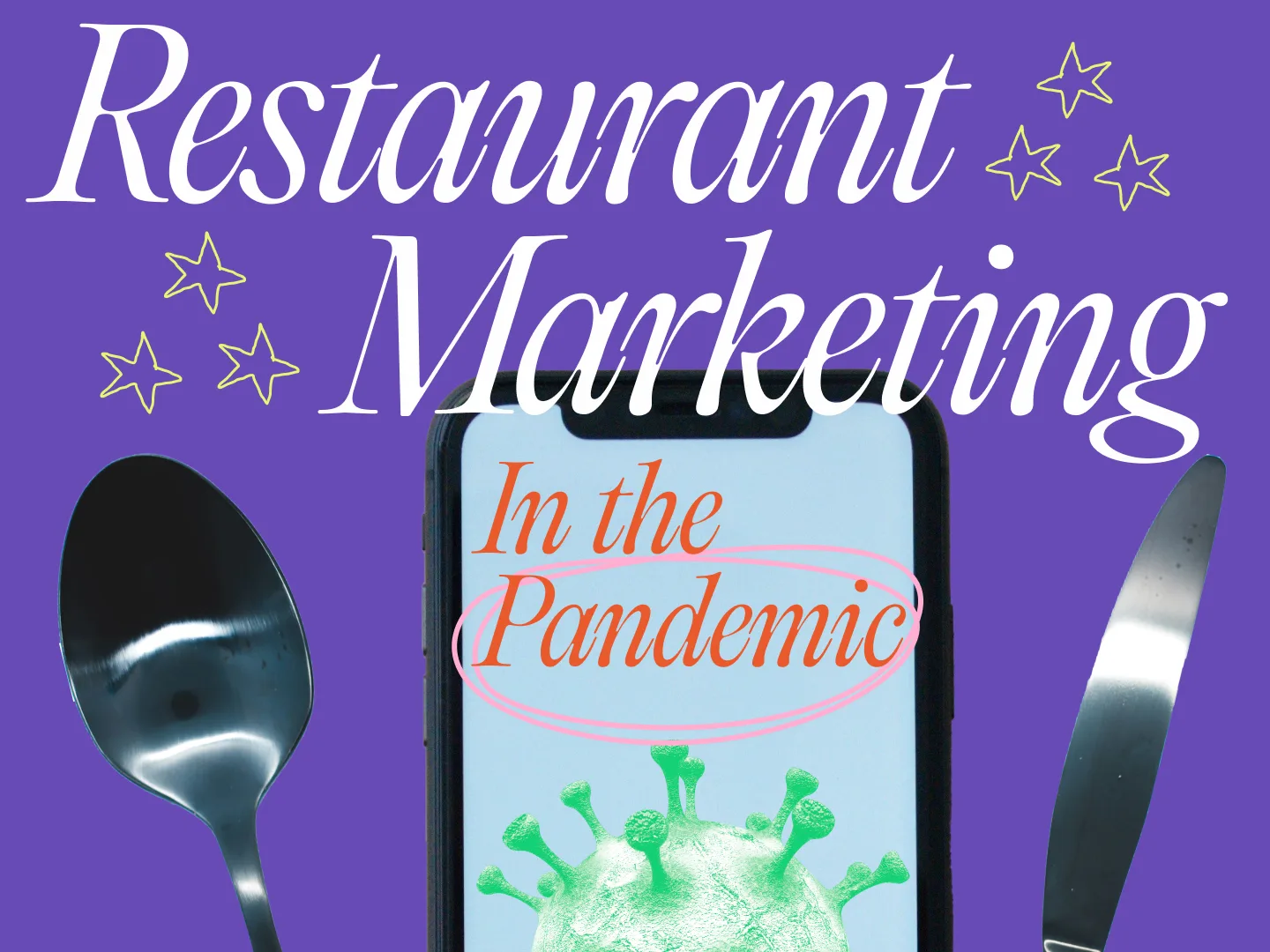
The pandemic isn’t over, and its effects may be felt for years to come. How should restaurants and other food-service providers prepare to succeed in a whole new world?
KEY TAKEAWAYS
- People are spending more time than ever on social media. Restaurant marketers should increase their presence on social channels to match.
- Restaurants should regularly and conspicuously broadcast their COVID-19 safety measures to reassure leery guests.
- Restaurants should explore cook-from-home meal kits and ready-to-go cocktails to broaden menu appeal.
- Look into menu engineering to ensure the maximum impact of every order.
To walk into a local restaurant is, in many ways, to walk into the heart of a community.
And right now, in the midst of the COVID-19 pandemic, more and more restaurateurs across the country have been forced into challenging positions, working harder than ever to prevent their hometowns from losing what makes them special to so many people. Some have been around for hundreds of years; others optimistically opened at the start of 2020, but nearly every restaurant has struggled to get by in a year riddled with uncertainty.
Following the U.S. government’s enforcement of shutdowns in an effort to slow the spread of COVID-19, four out of five restaurant owners weren’t sure they’d be able to survive the pandemic, even with stimulus assistance, putting 11 million workers and an entire trillion dollar industry at risk of financial ruin.
In a survey released by the James Beard Foundation and Independent Restaurant Coalition, independent restaurants reported laying off 91% of their hourly staff and nearly 70% of their salaried employees at the height of the pandemic.
Between just the months of March and May, research from the NRA (not that NRA–the National Restaurant Association) indicated that the restaurant industry had lost 120 billion dollars in sales. With restaurants re-opening, they now face limited capacity and other obstacles that could make it hard for them to turn a profit. To keep our cities’ unique spirits alive, restaurants must smartly navigate the terrain of a new, post-pandemic world.
Working with extremely low profit margins already—the average restaurant profit margin is between 2% and 6%—restaurants now more than ever must budget as wisely as possible. This means only spending on marketing when it is absolutely necessary, and when its effects can be accurately measured.
Many restaurateurs are scaling back campaigns significantly, but a cost-effective way to reach patrons is by being active on social media. With many people isolated at home, social media will become an even more crucial tool for restaurants to engage with potential customers.
72% of respondents in a survey indicated that their social media consumption had risen during the pandemic, with 43% of them claiming they’d been posting more frequently as well. Posting on social media now will generate more views for restaurants than ever before, and the likelihood that people will respond or make additional posts about restaurants is also at an all-time high. 36% of American diners follow restaurants on social media, with 39% of them doing so to determine if they want to order food from the establishment. This will likely only increase, making social media one of the most vital instruments to a restaurant’s success. Nearly half of U.S. diners have tried a restaurant for the first time because of a social media post made directly by the business, and 22% made the decision to return after further social media engagement.
Obviously social media posts can be very effective—if they’re done right.
21% of diners claimed posts discouraged them from visiting certain restaurants. Only by providing click-worthy content on the right kinds of platforms can restaurants expect to see a difference in their sales. While Facebook is the most commonly used social media platform for restaurants (91%), Instagram has recently exploded in popularity. In 2018, a measly 24% of restaurants reported using Instagram, but by 2019, that percentage had grown to 78%.
Quality posts on Facebook and Instagram will help maintain positive relations between restaurants and their audiences, and the importance of a good reputation is not to be underestimated. When discovering new restaurants, 59% of restaurant-goers rely on friends’ recommendations.
When one thinks of restaurants, surely they think of food. But a meal is far from being the sole reason why people patronize restaurants.
Many go out to eat for the atmosphere, the experience of visiting a new place, and the opportunity to meet people. Other times they go simply for the convenience of not having to cook for themselves. 90% of Americans don’t like to cook, and they’re willing to shell out extra money to avoid doing so. Since the beginning of March, “take out” search interest on Google has increased by 285%. “Restaurants near me” had been the most popular “near me” Google search since 2015, but consumer behavior quickly changed in 2020, with focus shifting towards “Delivery” as a result of COVID-19. There was a 650% increase in search interest for “Is food delivery safe” across the U.S. as people sought new ways to patronize restaurants.
Many diners still want restaurants’ food, they just need assurance that restaurants are taking the proper precautions to keep their customers out of harm’s way. Perhaps the biggest hurdle restaurants are facing currently is marketing to diners who’ve spent nearly an entire year hunkered down at home. An emphasis on safety is possibly the only way restaurants can win back the business of customers highly concerned about COVID-19. Going out will always pose a risk, but restaurants that make a visible effort to protect their customers from COVID will best manage maintaining strong reputations within their communities.
One safe and easy way restaurants can remain engaged with people who may be too fearful of dining in is to host online cooking classes and other types of virtual seminars.
Another alternative restaurants are adopting is the sale of at-home meal and cocktail kits, so that people can make restaurants’ dishes in the safety of their own homes. Despite people’s impartiality to cooking, 41% of consumers said they’d buy a make-at-home meal kit from their favorite restaurant if it was offered. If cooking habits are changing following the stay-at-home orders of 2020, this could be an area of importance for restaurants to capitalize on. A vast majority of millennials would rather spend money on an experience than a “thing,” and these experiential options will preserve the goodwill of restaurants even when offering an in-person experience remains a challenge.
If restaurants simply provided food to people and nothing else, they wouldn’t be as popular as they are.
Restaurants that will succeed in the post-pandemic world will continue to find ways to sell experiences to their patrons rather than just another meal. They’ll also continue to find new, more efficient ways to sell in general.
One tactic that’s not new but is receiving renewed attention is the concept of menu engineering.
With menu engineering, many restaurants have figured out how to maximize their profits through the strategic reconstruction of their menus. A fusion of psychology, data, and design, menu engineering can increase a restaurant’s profitability by as much as 20%, and a growing number of restaurants are embracing the practice. Requiring a thorough analysis of restaurants’ ingredients cost and sales numbers, the objective of menu engineering is to create infallible restaurant menus, so that every food and drink item is as popular and profitable as possible. The deliberate placement of items at certain locations on the menu also increases the likelihood of guests selecting specific things. When menu engineering is done correctly, a restaurant’s bottom line is fine regardless of what customers order from the menu, minimizing financial risks.
The COVID-19 pandemic has posed a challenge to businesses of all kinds, but hardly anyone has been hit harder than the restaurant industry.
Restaurants that devise new ways to remain afloat during this tumultuous time will ultimately become stronger, more resilient businesses in spite of the hardship they’ve had to endure. As long as there are people, restaurants will continue to survive along with us. They’re a staple of life, and if 2020 reminded us of one thing, it’s that life is sometimes unpredictable.
Whether we’re prepared for that unpredictability is up to us.
